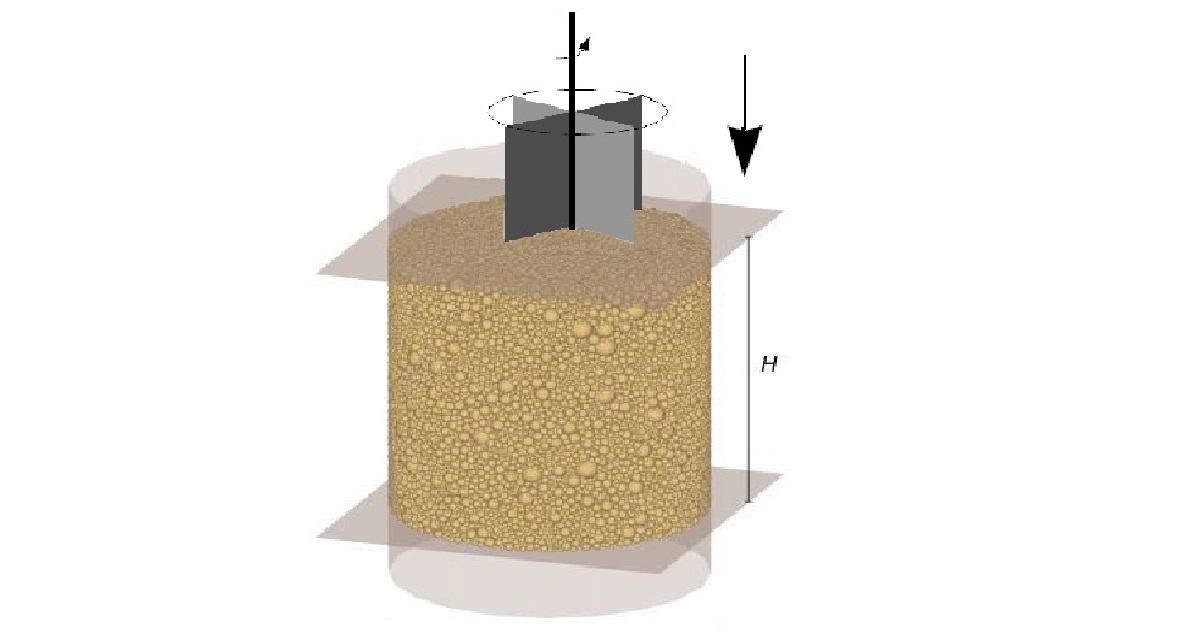In this project the applicability of the vane shear test in sand will be systematically explored. Systematic investigations of tailings are needed in order to judge the tailings behaviour. Simple and cost-effective measurement tools need to be developed to fulfil these possibilities.
In this project, laboratory vane tests on variable sandy soils and particle scale discrete element modelling (DEM) will be conducted. The effect of sand grains’ geometry and mechanical properties on the shear failure surfaces and shear strength will be investigated.
Vane shear testing is one of the most common methods for the estimation of the undrained shear strength of the soil. The popularity of the test is explained by the fact that it is simple and convenient to conduct in practice. The test is usually restricted to fine grained clay soils. Its applicability to silty and sandy soils and how to interpret vane test results in sand is still not determined. Some laboratory studies on oil sands and a rive sand from Korea have been conducted which showed promising results. However, more research is required to assess its applicability in sand and interpret the test results. The factors influencing the accuracy of the results need to be identified and guidelines of how to conduct the filed vane shear test in sand are required.
Therefore a pre‐study is undertaken in order to find out if this tests could qualify as a simple measure to analyse the strength of tailings and other fine granular material by:
- conducting vane tests in the laboratory to visualise the strain field activated.
- simulating vane tests by means of discrete element methods.
- generalising parameters detectable with vane tests in granular media.
- preparing field evaluation in comparison with CPT tests for the next SVC period.

